There are many magical and alchemical materials that go above and beyond ordinary materials such as wood, stone, iron, and steel. Although some such materials can be found in nature, such as novarite from Nuram or starshard and tektite from meteors, alchemical metals can only be forged by an alchemist.
Vizstones
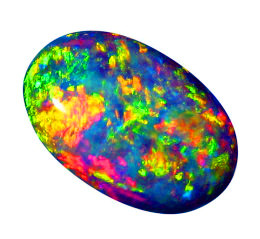
A vizstone is a crystalline stone that is capable of holding an empowerment. Vizstones appear to be a special type of opal, or at least have opalescent qualities. They are “living crystal stones,” meaning they possess some properties of life—chiefly in absorbing aetheric patterns and having the ability to resonate those patterns back when sufficient aethergy is applied.
A mage can infuse an empowerment into a vizstone, which burns the empoerment’s aetheric pattern of the into the viz stone’s crystalline structure. Once this is done, the empowerment can be activated by supplying sufficient aethergy to the vizstone, either by a mage or from some other source, such as aurium, an aetheric battery, or an aetheric dynamo. Items or devices that are empowered with vizstones are said to be empowered items, such as empowered swords, empowered armor, and so forth.
Many mages wear their viz stones as jewelry. Rings, necklaces, circlets, and armbands are all quite popular. Vizstones are also a key component in any a mage’s (or sorcerer’s or shaman’s) talisman, and contain the aetheric patterns of all the empowerments they have mastered, enabling them to perform them much quicker. A mage can perform any empowerment infused within his vizstones simply by focusing the necessary aethergy through the patterns infused within their crystalline structures. Mages also employ vizstones infused with special empowerment to aid in conducting aethergy, and their talismans may have several such conductor stones.
Novarite
No magical material is more famous, more valuable, or more extraordinary than the metal known as novarite. Novarite’s most useful property is its gravity-repelling effect. This effect not only makes it weightless, but actually gives it a negative weight, allowing it to remain buoyant at altitude (what altitude depends on how pure or refined the ore happens to be).
Novarite can only be mined from the great volcano Mount Novarus on the island of Nuram, the largest and deepest volcano in the world. This suggests that novarite may originate from somewhere deep within the planet’s mantel or core, but no one knows for certain. Floating rocks containing novarite ore can also be found at high altitudes around the world, having been flung out when the Novarus undergoes an eruption. The fact that the moon, Atracus, is covered in volcanoes has led to speculation that novarite may be quite common there.

Mining novarite is extremely dangerous, and the Novarus Mercantile works its people, as well as criminal slave labor and indentured servants, to the brink of death. Because of this extreme difficulty, pure novarite takes considerable time and resources to mine and refine. However, raw “stony” novarite can still be used to levitate objects, although with much less efficiency than refined novarite. As a result, raw novarite is much less expensive and far more common than pure, refined novarite.
Pure novarite metal exists as minute flakes and specks within the raw novarite ore, which is a light and porous volcanic rock. Novarite ore may slowly sink or float gradually upward depending on the amount of novarite in the rock itself. Purer ore often float away, and many such rocks can still be found at high altitudes.
Unlike airships, which stay aloft using cavenic lifting gas, aircruisers are lightened using costly novarite alloys. These great ironclad battleships of the air are rare and costly, but thanks to the wonder of novarite, remain the undisputed kings of the sky. However, even mighty aircruisers do not offset their entire weight with novarite. Instead, they only offset some 70% to 80% of their weight, then rely on engine power for both lift and propulsion. Airships and dirigibles, while using cheaper cavenic gas, may also use some novarite alloys to help lighten their structure and armor.
Orichalium
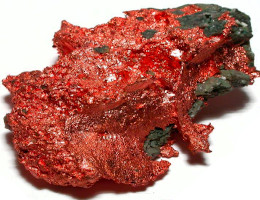
Orichalium is a red-colored metal that is highly malleable and ductile and has a high melting point. Orichalium, or orich, can conduct energy of any type, including thermal, electrical, magnetic, and aetheric (magical) energy. It can be made into wires, sheets, plates, and any other form that metal can be shaped into. The ancient Maradians perfected the usage of orichalium, creating great over-science wonders using intricate orichalium patterns etched in minute detail within their machines and devices. That technology has long been lost, but over the past few hundred years, great strides have been made in its usage, allowing for the creation of orichalium capacitors, batteries, and other devices to help harness aetheric energy. Orichalium is also a vital component of all magical talismans. Orichalium is primarily mined in Tricar and Megonia.
Ebonite Coal

Ebonite coal is a special kind of highly enriched coal that burns hotter and longer than ordinary coal. It is a lustrous black rock, mined only from the deepest coal mines. It is said that only 1% of all coal that is mined is ebonite. Ebonite coal can be manufactured from ordinary coal in special alchemical laboratories, but the energy required to create ebonite coal exceeds of the energy that ebonite coal produces when burned, so synthetic ebonite has never seen widespread adoption. Ebonite coal can only be used in special furnaces that have been designed to burn ebonite, as the heat would destroy furnaces designed to burn ordinary coal.
Aurium
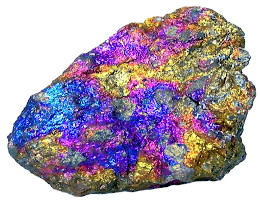
Aurium, or “cold aurium”, is magical ore that is a potent source of aethergy when burned in an aetheric reaction. It is crystalline rock, having the appearance of unrefined gold interlaced with brilliant, sapphire-blue veins. However, aurium is neither gold nor sapphire, nor any other known metal or mineral, and attempts to smelt it or refine it general end in destroying the ore. Aurium can be burned in an aetheric reaction, either triggered with certain alchemicals or the direct application of aethergy, whether from a mage or some other source. Once the burning starts, a single ingot of aurium will release significant quantities of aethergy that can then be harnessed by a mage or by a machine fueled by aethergy. Once the aurium ingot is spent, all that is left is a crumbling dark gray material, similar to spent charcoal.
Radiant Aurium
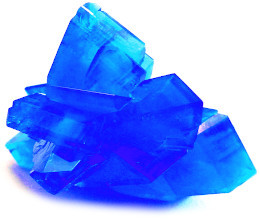
Radiant aurium is a highly enriched form of cold aurium, saturated with a self-sustaining infusion of metaplasmic particles. Radian aurium glows brilliant blue with shimmering golden hues, and is scorching hot to the touch. The material was created and used in the Age of Marada to power much of Marada’s over-science technology, including solaonic reactors, vortex engines, and doomseeds. Although radiant aurium is created from ordinary cold aurium, aurium by itself can work as a simple energy source, much like a battery. Radiant aurium, on the other hand, serves as an elemental reaction mass that can be annihilated in a solaonic reactor, producing vast quantities of energy. A sufficient quantity of radiant aurium can power a solaonic reactor for over a year before needing to be replenished. Today, radiant aurium is exceedingly limited, and the secret of producing it have yet to be rediscovered.
Diamanium
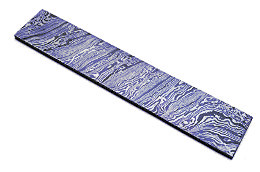
Diamanium is a bluish, crystalline metal that is not found in nature. It is an advanced alchemical metal that was once forged using a now-lost process involving a variety of metals being mixed with diamond powder, and further refined in complex processes using high concentrations of aethergy and elemental light. Some diamanium armor and weapons dating back to the Age of Marada can still be found today. Significant efforts are being made to rediscover its exact formulation, but it thus far remains undiscovered. Diamanium has a detectable magical aura.
Argent Steel
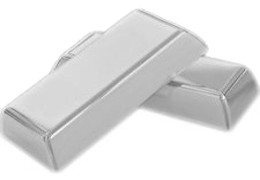
Argent steel is a durable, alchemical alloy of silver and steel. It is not significantly different than normal steel, except that it has been alloyed with silver. Although this makes it more expensive, weapons forged of argent steel are extremely useful for fighting vampires, mortifants, and other undead. Furthermore, armor made of argent steel is more resistant to magic. All armor and weapons made from argent steel have a lustrous, metallic silver color.
Alchemical Steels
Apart from argent steel and adamantine steel, there are a number of other advanced steels that are forge using various alchemical processes.
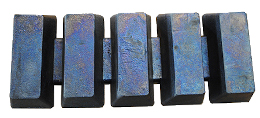
There are four major types of alchemical steel, distinguished by their composition and color. The most common is cobalt steel, which has a dark-blue metallic color. Azure steel has a shiny, light blue color. Viridian steel is a silvery green to deep-green steel and is popular with Eldrien. Cinnabar steel is a blood-red metallic color and when it is combined with chardite steel, it has a considerably menacing appearance. All alchemical steels are stronger than normal steel, offer some degree of magical resistance, and have a detectable magical aura.
Dworghen Steel
Dworghen steel is essentially the same as alchemical steel, but Dworghen steel is somewhat more common than alchemical steel. It also lacks both the magical aura and the magical resistance found in alchemical steels. All Dworghen steel has a smooth, but dull ocher color.
Chardite Steel
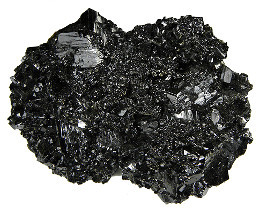
Often called “black silver,” chardite steel is made from a rare black metal that is similar to silver. It has a detectable magical aura that is the reversal of silver and has other properties that seem opposite to silver as well. Any undead wearing chardite as armor is immune to the effects of silver and is not harmed by contact with silver. In addition, chardite steel is said to enhance necrolic energy. Because of these facts, chardite is commonly used as armor for undead (and is especially prized by vampires) or in weapons and magic items that harness necrolic energy. It is likewise favored by evil sorcerers and karcists specializing in death magic.
Severite
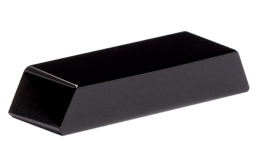
Severite is a rare metal sometimes mistaken for lead due to its density and malleability. It is, however, much darker than pure lead (dark gray to black) and is difficult to alloy with other metals. As such, severite would be utterly useless were it not for its one astonishing virtue: it can utterly negate the effects of magic.
Current theories suggest that severite causes a form of magnetic interference in the aether, disrupting magical energies in a haze of random disorder. But whatever the cause, two pounds are enough to completely suppress a person’s magical abilities, however powerful they are. Severite bonds (cuffs or manacles) are often used on prisoners who possess magical powers, and occasionally by mages and sorcerers wishing to temporarily hide their magical aura.
Starshard
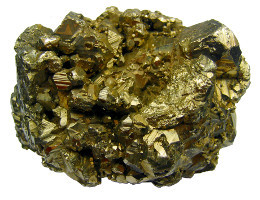
Certain meteorites contain a golden meteoric iron called starshard, which stems from the now antiquated notion that meteors were fallen fragments of stars. Starshard is stronger than steel and has a much higher density; therefore, armor made of starshard is thinner and stronger, but has the same weight as normal steel armor. Starshard must be melted and shaped at very high temperatures, requiring that it be forged in special, high-temperature foundries. All armor and weapons made from starshard have a metallic gold color and a detectable magically aura.
Tektite Glass
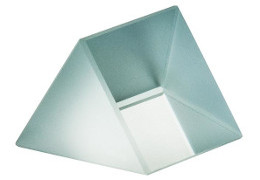
Tektite is a type of glass refined from meteorites that have fallen from the sky. It is only possible to find raw tektite ore in meteor impact sites, and it usually occurs along with starshard. Tektite, like starshard, is rare, but rich deposits have been found in Freyor where a great meteor was thought to have struck long ago. Tektite ore can be made into glass that is as strong as steel. Although expensive, such glass is frequently used wherever “armored glass” is a necessity, such as military airships, aircruisers, and fortresses.